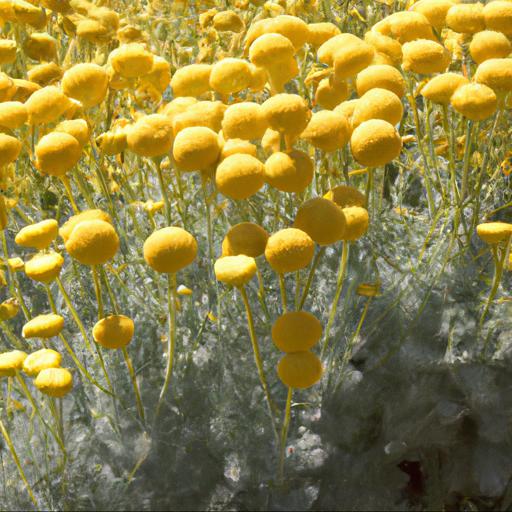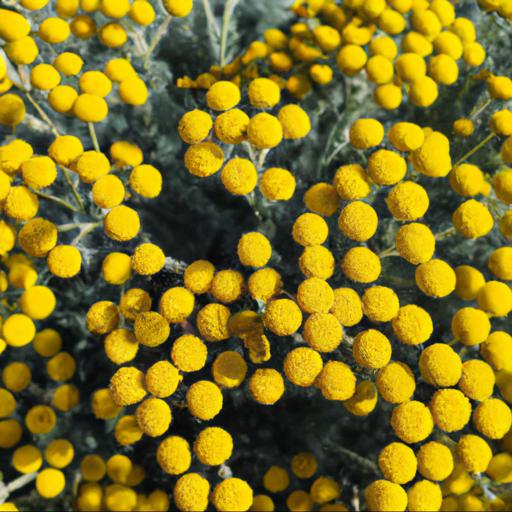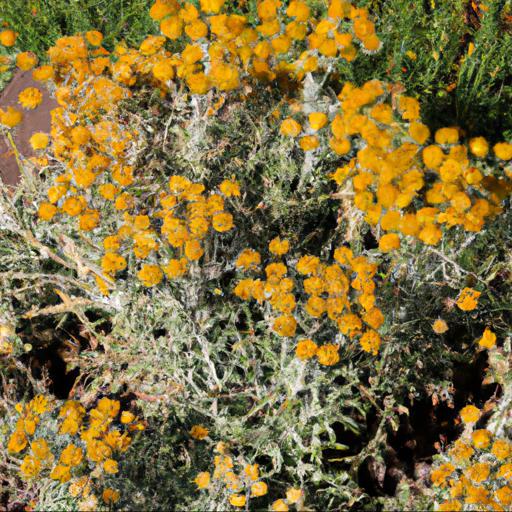Santolina chamaecyparissus, commonly known as Cotton Lavender, is a species of flowering plant native to the Mediterranean region. This hardy, evergreen shrub is well known for its aromatic foliage and its ability to thrive in dry, sunny conditions.
It makes an excellent choice for low-maintenance, drought-tolerant landscaping, and its attractive, mounding form and bright yellow blooms make it an eye-catching addition to any garden. In this blog, we will explore the many uses and benefits of Santolina chamaecyparissus, from its use as an ornamental plant to its traditional medicinal properties.
Benefits of growing santolina chamaecyparissus

With its scented silver foliage and bright yellow button-like flowers, Santolina chamaecyparissus is a beautiful addition to any garden. Commonly known as Santolina or Lavender Cotton, this Mediterranean shrub is drought tolerant and yet offers a variety of benefits for avid gardeners. This hardy evergreen grows in small mounded or tiered bushes and is popular for its ability to thrive with minimal care and attention.
In fact, Santolina is such a low maintenance plant that it’s often used in rock gardens, raised beds, and even xeriscapes. Although it stays at a manageable height of one foot tall and two feet wide, the bushy nature of the shrub creates a lush, full look and can be grown as a short hedge.
Apart from its minimal maintenance needs, Santolina also gives gardeners further reward with its fragrant aroma and lovely blooms. The flowers, which are a bright golden color, resemble a small puffball and have a soothing lavender scent. Additionally, the grey-green foliage gives off an herbal cologne when touched, which is unique to this plant.
In addition to being an attractive addition to a garden, Santolina also works wonders as an insect repellent and can even be used to make a herbal tea. The plant’s essential oils have a number of therapeutic benefits, including relief from muscle and joint aches, and it can be used as a powerful antifungal agent.
Whether it’s for its looks, its aroma, or its medicinal properties, Santolina chamaecyparissus presents a wonderful multitude of benefits for gardens everywhere.
Tips for growing santolina chamaecyparissus

Tips for Growing Santolina Chamaecyparissus:Santolina chamaecyparissus, or Lavender Cotton, is an eye-catching evergreen shrub perfect for adding structure to gardens and courtyards. It produces bright green foliage, with small yellow flowers in the summer.
Plus, it has a pleasant scent that will fill your garden all season. With a bit of extra care, you can get the most out of your Santolina chamaecyparissus. Here are some tips to help you get started.
The most important thing when it comes to growing Santolina chamaecyparissus is to provide it with well-drained soil and plenty of sunshine. This shrub loves dry and sunny conditions, so make sure your plant is in an area with at least six hours of direct light during the day. It’s also important that your soil is fast-draining, as Santolina chamaecyparissus can quickly succumb to root rot in soils that are too damp.
To ensure proper drainage, you can add a layer of gravel or sand to the top of the soil when planting. Once you have it planted in the right conditions, you’ll need to make sure it’s getting the proper nutrients.
Although it’s relatively low maintenance, adding a bit of fertilizer in the spring can help your Santolina chamaecyparissus reach its full potential. A slow-release fertilizer or a liquid one diluted to half-strength will work well.
You can also apply a light mulch in the spring to help keep the soil moist and encourage a healthier root system. Finally, if your Santolina chamaecyparissus starts to look a bit leggy, you can give it a trim. This will encourage bushier growth and new foliage.
Be sure to use sharp clippers and make your cuts just above an existing leaf or bud. With these tips, you can make the most of your Santolina chamaecyparissus and ensure it looks its best all season long.
Common problems with santolina chamaecyparissus

As a UK garden expert, when discussing Santolina chamaecyparissus, one of the common problems is its tendency to struggle in certain climate conditions, such as colder and wet climates. This can quickly become a problem if the plant is not suitably acclimatised or prepared for these conditions. Likewise, Santolina chamaecyparissus has a tendency to become overgrown and unruly, especially when it is planted in a position that does not provide for frequent pruning and tidying.
Although these plants can reach heights of nearly one foot, it is best to keep them at a manageable size before they get out of hand and difficult to control. Finally, this species is also quite susceptible to pests and diseases, as many other plants are.
It is important to keep an eye on the plant and to tackle any potential issues as soon as they are spotted. This might include using insecticides to avoid or treat an infestation, or using a fungicide to avoid a fungal disease. Being vigilant and prepared can be key to the successful and long-term cultivation of Santolina chamaecyparissus.
Our video recommendation
Final Touch
Santolina chamaecyparissus, commonly known as lavender cotton, is an evergreen shrub with fragrant foliage and yellow flowers. It is native to the Mediterranean region and is drought-tolerant, making it an ideal choice for low-maintenance gardens.
When planted in sunny, well-drained spots, it can be a great addition to any landscape. It can also be used as a low hedge or border, adding texture and interest to the garden.
FAQ
What are the common names for Santolina chamaecyparissus?
Common names for Santolina chamaecyparissus include lavender cotton, gray santolina, and cotton lavender.
What are the characteristics of Santolina chamaecyparissus?
Santolina chamaecyparissus is a small, evergreen shrub with aromatic, silvery-gray foliage and small, yellow button-like flowers. It is drought-tolerant, deer-resistant, and grows best in full sun and well-drained soil. It is often used as an ornamental plant in gardens and borders.
How is Santolina chamaecyparissus used in landscaping?
Santolina chamaecyparissus is commonly used in landscaping as an ornamental shrub due to its attractive gray-green foliage and yellow flowers. It is often used as a low-maintenance ground cover, as a border or edging plant, or as a low hedge.
What are the growing requirements for Santolina chamaecyparissus?
The growing requirements for Santolina chamaecyparissus include full sun, well-drained soil, and occasional watering. It is drought-tolerant and can tolerate a wide range of soil types. It is also tolerant of salt and wind.
How can Santolina chamaecyparissus be propagated?
Santolina chamaecyparissus can be propagated by seed, cuttings, or division.
What pests and diseases affect Santolina chamaecyparissus?
Common pests and diseases that affect Santolina chamaecyparissus include powdery mildew, root rot, rust, and aphids.

